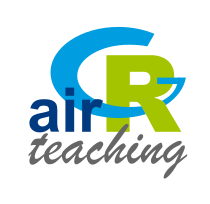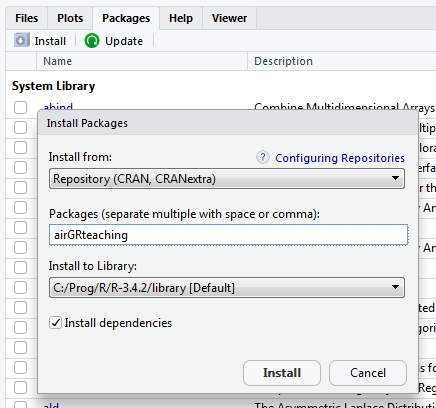How to cite the
package
To cite the
airGRteaching package in
your scientific document, please use the references returned by the
citation() function:
citation("airGRteaching")
To cite airGRteaching in publications use these two references:
Delaigue, O., Brigode, P., Thirel, G. and Coron, L. (2023). airGRteaching: an open-source tool
for teaching hydrological modeling with R. Hydrology and Earth System Sciences 27, 3293–3327,
doi: 10.5194/hess-27-3293-2023.
Delaigue, O., Coron, L., Brigode, P. and Thirel, G. (2025). airGRteaching: Teaching Hydrological
Modelling with GR (Shiny Interface Included). R package version 0.3.5, doi:
10.32614/CRAN.package.airGRteaching.
To see these entries in BibTeX format, use 'print(<citation>, bibtex=TRUE)', 'toBibtex(.)', or set
'options(citation.bibtex.max=999)'.
To retrieve a “.bib” format for LaTeX documents, you
can use the following command:
toBibtex(citation("airGRteaching"))
@Article{,
author = {O. Delaigue and P. Brigode and G. Thirel and L. Coron},
title = {{airGRteaching}: an open-source tool for teaching hydrological modeling with {R}},
booktitle = {HIC 2018. 13th International Conference on Hydroinformatics},
journal = {Hydrology and Earth System Sciences},
volume = {27},
number = {17},
pages = {3293-3327},
year = {2023},
url = {https://hess.copernicus.org/articles/27/3293/2023/},
doi = {10.5194/hess-27-3293-2023},
}
@Manual{,
title = {{airGRteaching}: Teaching Hydrological Modelling with {GR} ({Shiny} Interface Included)},
author = {O. Delaigue and L. Coron and P. Brigode and G. Thirel},
journal = {R News},
year = {2025},
note = {R package version 0.3.5},
url = {https://CRAN.R-project.org/package=airGRteaching},
doi = {10.32614/CRAN.package.airGRteaching},
}



